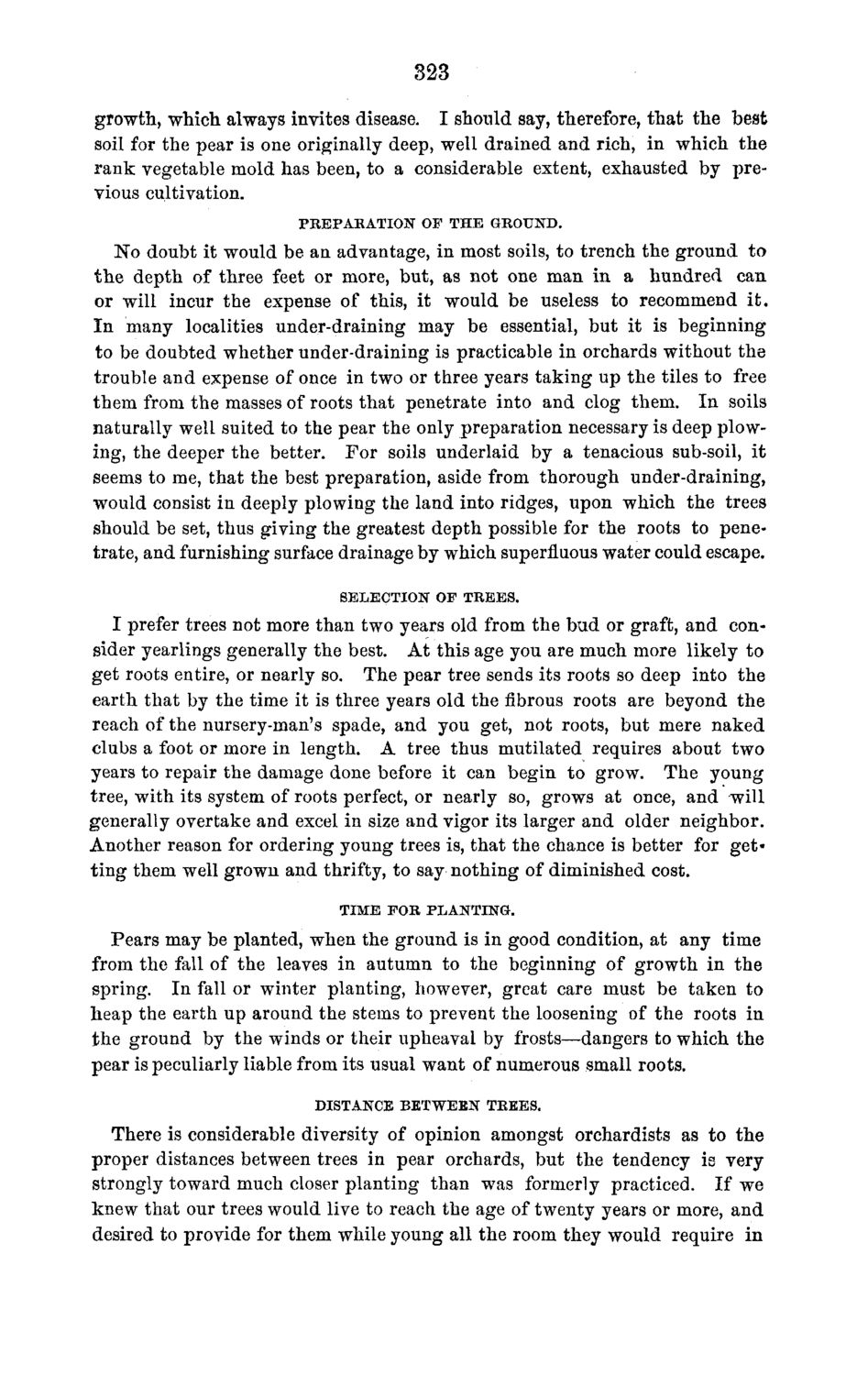| |
| |
Caption: Board of Trustees Minutes - 1870
This is a reduced-resolution page image for fast online browsing.

EXTRACTED TEXT FROM PAGE:
323 growth, which always invites disease. I should say, therefore, that the best soil for the pear is one originally deep, well drained and rich, in which the rank vegetable mold has been, to a considerable extent, exhausted by previous cultivation. PREPARATION OF THE GROUND. No doubt it would be an advantage, in most soils, to trench the ground to the depth of three feet or more, but, as not one man in a hundred can or will incur the expense of this, it would be useless to recommend it. In many localities under-draining may be essential, but it is beginning to be doubted whether under-draining is practicable in orchards without the trouble and expense of once in two or three years taking up the tiles to free them from the masses of roots that penetrate into and clog them. In soils naturally well suited to the pear the only preparation necessary is deep plowing, the deeper the better. For soils underlaid by a tenacious sub-soil, it seems to me, that the best preparation, aside from thorough under-draining, would consist in deeply plowing the land into ridges, upon which the trees should be set, thus giving the greatest depth possible for the roots to penetrate, and furnishing surface drainage by which superfluous water could escape. SELECTION OF TREES. I prefer trees not more than two years old from the bud or graft, and consider yearlings generally the best. At this age you are much more likely to get roots entire, or nearly so. The pear tree sends its roots so deep into the earth that by the time it is three years old the fibrous roots are beyond the reach of the nursery-man's spade, and you get, not roots, but mere naked clubs a foot or more in length. A tree thus mutilated requires about two years to repair the damage done before it can begin to grow. The young tree, with its system of roots perfect, or nearly so, grows at once, and will generally overtake and excel in size and vigor its larger and older neighbor. Another reason for ordering young trees is, that the chance is better for getting them well grown and thrifty, to say nothing of diminished cost. TIME FOR PLANTING. Pears may be planted, when the ground is in good condition, at any time from the fall of the leaves in autumn to the beginning of growth in the spring. In fall or winter planting, however, great care must be taken to heap the earth up around the stems to prevent the loosening of the roots in the ground by the winds or their upheaval by frosts—dangers to which the pear is peculiarly liable from its usual want of numerous small roots. DISTANCE BETWEEN TREES. There is considerable diversity of opinion amongst orchardists as to the proper distances between trees in pear orchards, but the tendency is very strongly toward much closer planting than was formerly practiced. If we knew that our trees would live to reach the age of twenty years or more, and desired to provide for them while young all the room they would require in
| |